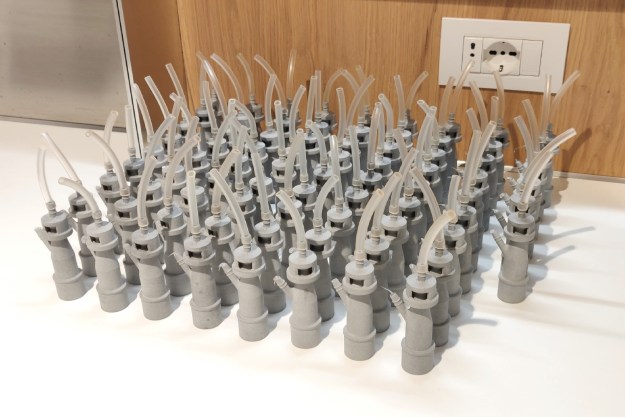
The prosthetic developed by Ryan Bouricius is relatively simple in design — using craft supplies like screws, rubber bands, and nylon chords — but it’s functional and allows users to hold a cup, write with a marker, and catch a ball just by moving their wrist.
“3D printing … allows one to develop a design much more quickly than through conventional methods,” Bouricius told Digital Trends. “When one has an idea, one can draw up a modified 3D model on the computer right away. At this stage many engineering firms would have to order these parts to be made from a machine shop.”
With traditional methods, it could take weeks before the prototype is delivered and tested. Meanwhile, Bouricius said, “With a 3D printer, new designs can be manufactured on site for just a few cents per gram of filament.”
Bouricius usued a biodegradable thermoplastic derived from corn starch which, when fed through a Makerbot printer, came out to about five cents per gram. That means filament for a prosthetic suitable for a child would cost just a couple dollars, with the majority of the expense coming from the crafts and printer time. Bouricius considers his prosthetic as particularly well-suited for children, since children quickly outgrow their prosthetics, which can of course be expensive over time.
To test his prosthetic, Bouricius tried to modify the hand to open a round doorknob. “This proved extremely difficult,” he said. “Even when I had enough dexterity, the grip strength simply wasn’t there.” Bouricius set out to tackle smaller tasks by adjusting the prosthetic to achieve a few various grips, like the precision grip (thumb to forefinger) and power grip (clenched fist). “No hand will be optimized for everything, but I am trying to maximize the number of things it can do well,” he said.
The prosthetic was developed in the 3D Printing Lab of Professor Michael ‘Bodhi’ Rogers. Bouricius is now writing a thesis on his work and has partnered with e-NABLE, a non-profit that matches 3D-printed prosthetics with people who need them.
Editors' Recommendations
- AMD’s latest V-Cache chip proves to be cheap, fast, and perfect for gaming
- Here’s what a trend-analyzing A.I. thinks will be the next big thing in tech
- GPS-tracking, 3D-printed decoy eggs can help root out illegal poachers
- Inside the quest to 3D print a perfectly palatable steak
- The 50-year old Silicon Valley lab that practically invented modern computing


